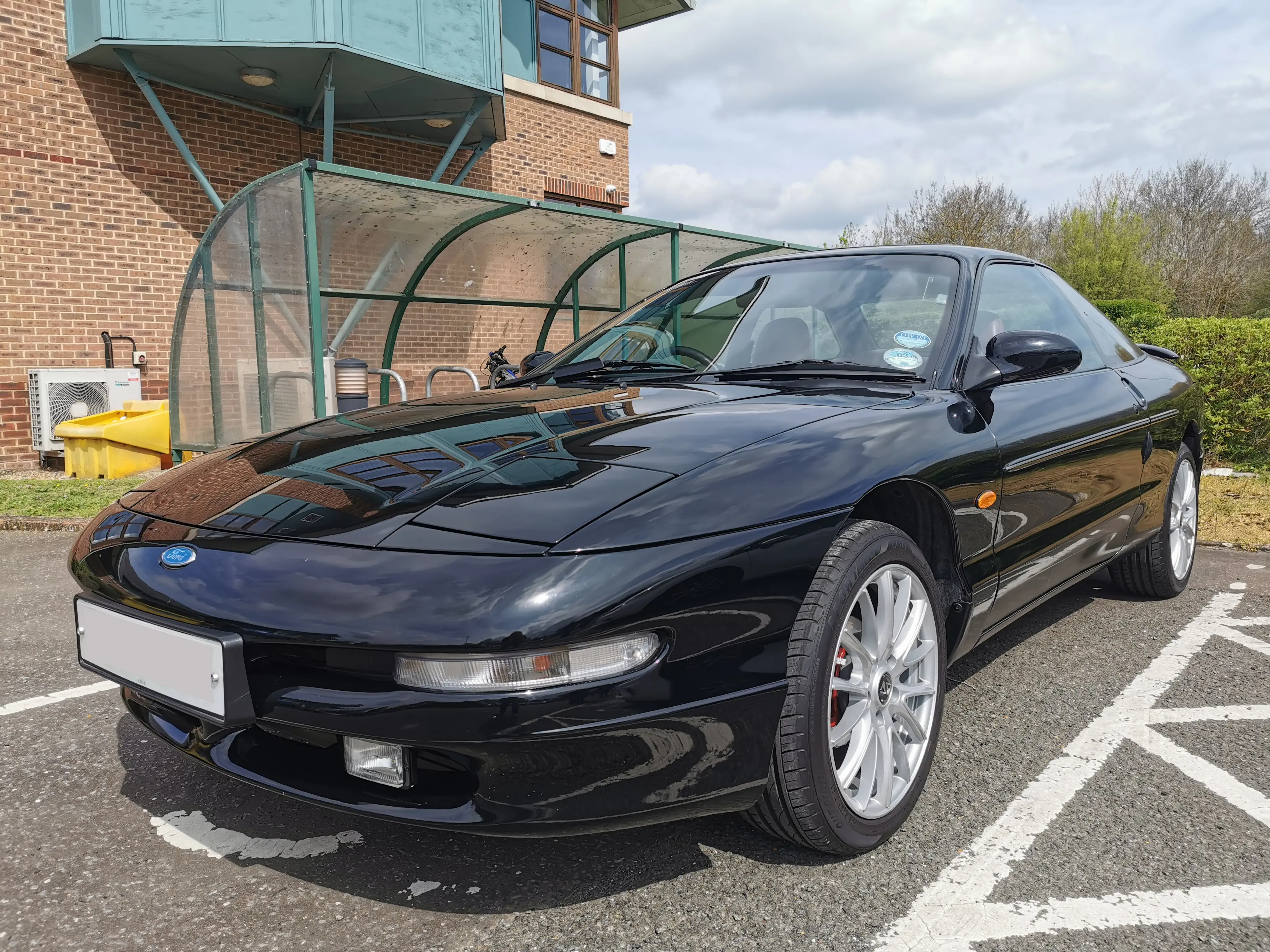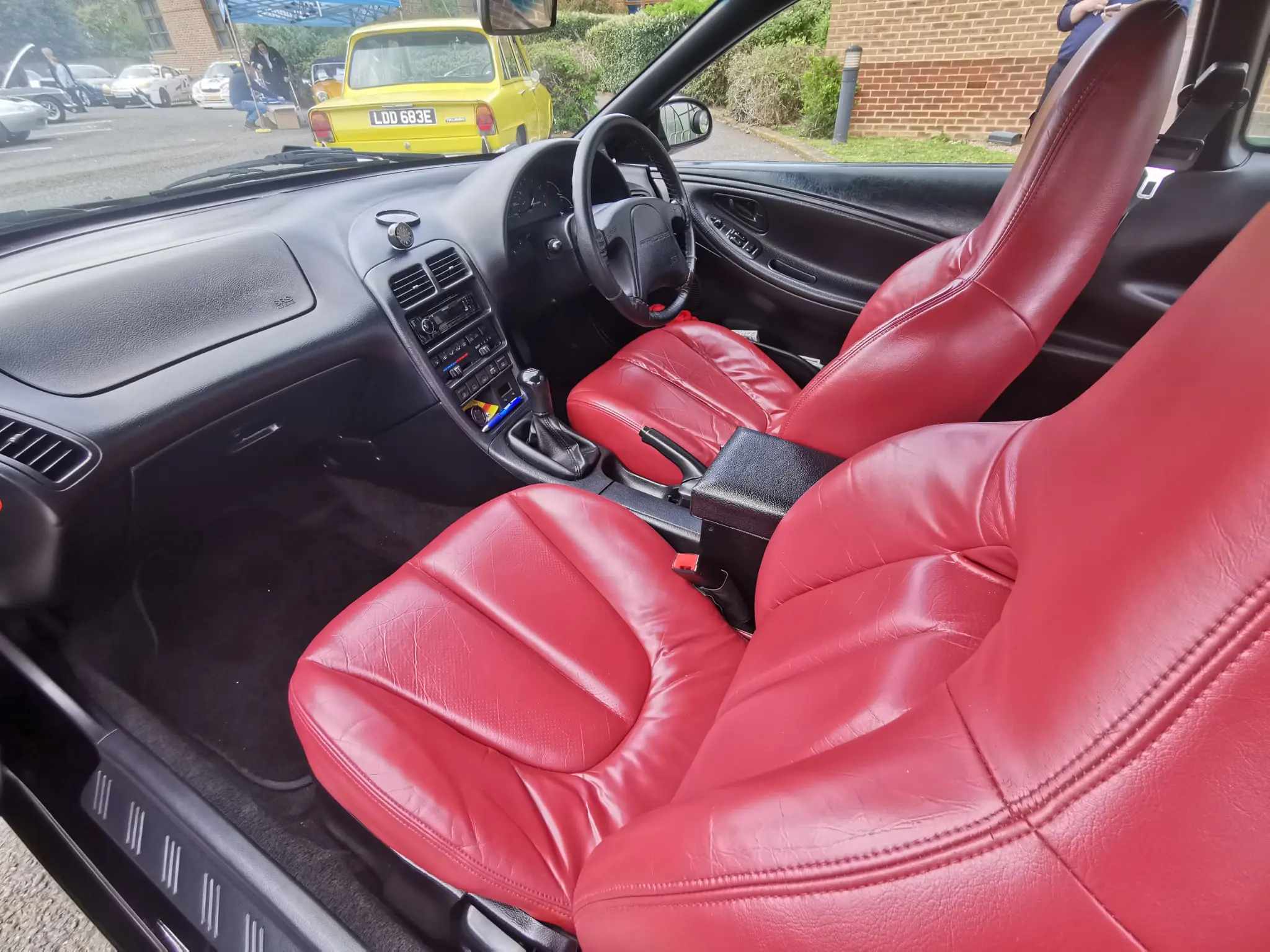Meet The Owner – Alastair Roberts and his Ford Probe 16v
07 July 2023
The Ford Probe was never meant to replace the Capri, but the press didn’t see it that way. Six years since the beloved model went the way of the dodo, front-wheel drive coupes were still in demand; Alastair Roberts, having owned a Capri 2.0S in the past, bought his Probe 16v after the end of an unhappy company car lease.
Few cars divided opinion at the time like the Probe, a model whose first generation UK buyers were denied. The unkind made fun of its name – and the fact it wasn’t a Capri, stoked by magazine scoops and purple prose. Its sleek shape and pop-up headlights, shared with the Mazda RX-7 ‘FD’, won it as many fans as detractors.
While most reviews focused on the 2.5-litre V6 24v, the four-cylinder, 2.0-litre 16v cars offered better economy, that same slinky shape and a massive hatchback rear end. Capri not by name, but Capri in nature!

Alastair plumped for the four-pot over the V6 owing to his commute, which, at the time, was a 30-mile round trip into Cambridge and back. “I used to go out to meetings and various other things in it, so it seemed a better bet at the time,” he said. “I thought it looked more economical.”
Ford played a canny hand with the Probe, too, built with Mazda (which also sold the related MX-6) in Flat Rock, Michigan. Despite the costs involved with a right-hand-drive conversion, it meant that it could also homologate (and sleeve down) Mazda’s lightweight, compact, 2.5-litre V6 for use in the British Touring Car Championship, as it was fitted to the fastest Probes.
“I just took a fancy to them. I thought, gosh, those Probes are quite nice,” he said, having tracked this particular car down in Hertfordshire in 2002. His name was the third to go on the logbook, two family members having owned the car concurrently since new.
As one of the last Probes built for the UK market, it has, so far, escaped the immobiliser problems that sent hundreds of cars to the scrapyard prematurely; luckily, the United Kingdom Probe Owners’ Club (UKPOC) devised a fix years ago.

Not that Alastair’s car was without problems. “I've had bits done on the rear wheel arches over time,” he volunteered.
That wasn’t all. “One of the main problems with the Probes is that the sunroof rots out. It's a design fault,” Alastair explained; his 16v was no exception. Sunroof panels, left unattended, like to seize and then leak. They usually get welded or bodged close to stop damaging the roof skin and pillars.
According to Alastair, there’s a simpler stopgap for a Probe owner: “They do say if you own one of these and it's quite old, don't use the sunroof.”
Alastair was missing his miles of weather, mind you, and sprang into action, at first turning to the UKPOC. “The Probe Club came up with a fibreglass replacement [panel],” he said. “Then, I found that the fibreglass started to ripple, so I took it to a trimming company and they put a Webasto [unit] in instead. It works now.”
That’s not the only thing Alastair improved on his 16v. As standard, these cars were fitted with 15-inch, three-spoke alloys; they always looked a little lost in the arches.
The 24v cars had bulkier 16-inch, five-spoke items of two differing designs as the model aged, but Alastair went one better: his car now sports a set of 17-inch aftermarket rims, with the appropriate offset to fill out the Probe’s track. He also had a spoiler fitted during his time with the car.
As the cheaper model, Alastair’s 16v also did without a leather interior (24v cars had them as standard, and cloth could be had as a no-cost option should you dislike the squeaking and creaking of hide). Many Probe owners change interiors to suit their requirements, resulting in paint/décor combinations that never existed on the line at Flat Rock.

Alastair went one better, however, buying leather seats and door cards from a Probe enthusiast in Coventry, then having them custom trimmed in a supple red leather. It looks factory – and had us wondering why Ford never offered this option back in the day.
Other than that, the Probe’s behaved itself. “You expect that things go, you know, but generally speaking it's been very good. It's been looked after by a local garage,” Alastair said, with the UKPOC helping with a lot of parts.
“I haven't had to [search for many spares otherwise]. I mean, there have been there are a few things which you find that you can get in Germany more easily, you know, like ABS sensors and things like that.”
Despite its manifold qualities, Probe model sales were never brilliant, falling far short of the Capri’s. It was a similar story in the US, where, briefly, the Probe was mooted as a Mustang replacement.
Its rarity is part of the appeal for Alastair, however: “A lot of people don't realize that they are American cars. All the little lights and things are all stamped with the USA on them. It isn't really a British car at all.”
He has no plans to sell – instead, he’d rather enjoy the Probe and take it to shows. It’s certainly no stranger to classic car shows; indeed, with the oldest examples now celebrating their 30th birthday, historic vehicle status isn’t that far away.
Alastair said: “I did Sandringham last year. I also did the show on the Isle of Wight. We went over on the ferry. Took it down there for the weekend, that huge show in Ryde. I’ve also done the one at Helmingham, in Suffolk, a few times.”
Expect to see Alastair’s car out and about in the east of England, its black paint shining. It may have had a bumpy ride in the public’s affections, but the Probe is becoming a classic. Surely, it deserves more recognition.
